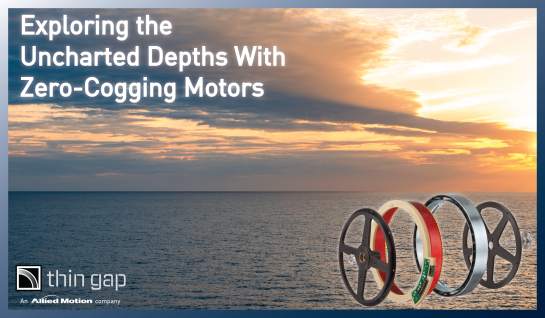Scheduled to launch early in the morning on February 6, 2024 from Kennedy Space Center aboard a SpaceX Falcon 9 rocket, the PACE Mission marks the first time ThinGap has achieved flight certification by NASA. PACE is a NASA mission that ThinGap has been proud to support. Developed and produced by NASA Goddard Space Flight Center in Maryland, PACE is a planned decade-long mission to study the Earth’s oceans and atmosphere.

The PACE launch is scheduled for 1:35 a.m. EST. In attendance to witness the historic event firsthand will be representatives from ThinGap’s management and engineering teams. In 2021, ThinGap supplied custom made LS Series motor kits to the development team at NASA Goddard. These motors were designed to be integrated into the PACE Mission’s Ocean Color Instrument or OCI sensor payload.
The goal of the PACE mission is the monitoring of worldwide oceanic health through observation of the color of the ocean’s surface, as well as how reflected sunlight interacts with the atmosphere. The color of surface water is heavily influenced by sunlight’s interaction with chlorophyll, a green pigment found in plants as well as the phytoplankton that inhabit the ocean. Designed and built by NASA Goddard, the heart of the OCI (Ocean Color Instrument) is an advanced hyperspectral optical spectrometer, capable of measuring the color of the ocean from ultraviolet, through visible color, to short-wave infrared wavelengths. Previous NASA satellites have been limited to studying a small portion of this spectrum, so a single instrument being able to capture more data than before is a huge benefit to researchers. ThinGap supplied custom LS Series motors to NASA in 2021 that drive the continuously rotating cross-track telescope.
The two other payloads aboard PACE are polarimeters intended to measure how sunlight reflected by the Earth’s surface interacts with clouds, aerosols, and the ocean surface. The first is SPEXone, designed and built by a Dutch team including Airbus Defense & Space, Netherlands Institute for Space Research, and supported by the Netherlands Organization for Applied Scientific Research is designed to characterize particles suspended in the atmosphere by chemical composition and their impacts on climate change.
The other polarimeter aboard PACE, designed and built by University of Maryland Baltimore County’s Earth and Space Institute is HARP2 (Hyper-Angular Rainbow Polarimeter) sensor. HARP2 is a wide-angle imaging polarimeter designed to measure the properties of atmospheric particles, including their size, distribution, shape, and density. Previous HARP instruments have been flown on both airborne platforms as well as CubeSats, which helped influence the design of HARP2.
ThinGap is honored to support this mission by supplying custom motors, as well as achieving flight certification. Additionally, ThinGap has supplied more than 2,500 motor kits in support of a major commercial constellation, as well as US Space Force projects for prime customers.

